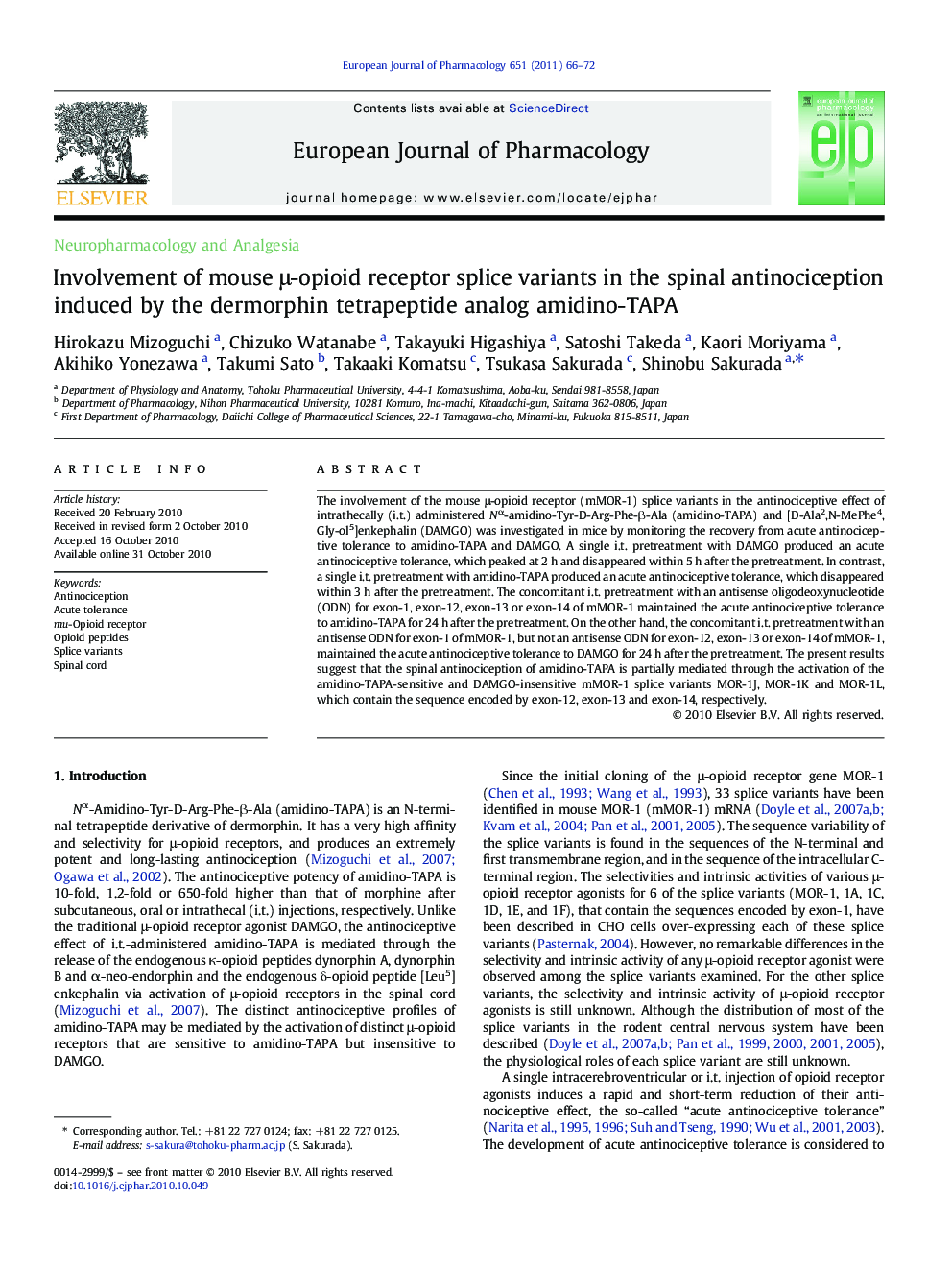| Article ID | Journal | Published Year | Pages | File Type |
|---|---|---|---|---|
| 5830464 | European Journal of Pharmacology | 2011 | 7 Pages |
Abstract
The involvement of the mouse μ-opioid receptor (mMOR-1) splice variants in the antinociceptive effect of intrathecally (i.t.) administered Nα-amidino-Tyr-D-Arg-Phe-β-Ala (amidino-TAPA) and [D-Ala2,N-MePhe4,Gly-ol5]enkephalin (DAMGO) was investigated in mice by monitoring the recovery from acute antinociceptive tolerance to amidino-TAPA and DAMGO. A single i.t. pretreatment with DAMGO produced an acute antinociceptive tolerance, which peaked at 2 h and disappeared within 5 h after the pretreatment. In contrast, a single i.t. pretreatment with amidino-TAPA produced an acute antinociceptive tolerance, which disappeared within 3 h after the pretreatment. The concomitant i.t. pretreatment with an antisense oligodeoxynucleotide (ODN) for exon-1, exon-12, exon-13 or exon-14 of mMOR-1 maintained the acute antinociceptive tolerance to amidino-TAPA for 24 h after the pretreatment. On the other hand, the concomitant i.t. pretreatment with an antisense ODN for exon-1 of mMOR-1, but not an antisense ODN for exon-12, exon-13 or exon-14 of mMOR-1, maintained the acute antinociceptive tolerance to DAMGO for 24 h after the pretreatment. The present results suggest that the spinal antinociception of amidino-TAPA is partially mediated through the activation of the amidino-TAPA-sensitive and DAMGO-insensitive mMOR-1 splice variants MOR-1J, MOR-1K and MOR-1L, which contain the sequence encoded by exon-12, exon-13 and exon-14, respectively.
Related Topics
Life Sciences
Neuroscience
Cellular and Molecular Neuroscience
Authors
Hirokazu Mizoguchi, Chizuko Watanabe, Takayuki Higashiya, Satoshi Takeda, Kaori Moriyama, Akihiko Yonezawa, Takumi Sato, Takaaki Komatsu, Tsukasa Sakurada, Shinobu Sakurada,
